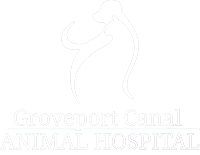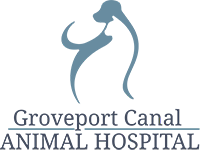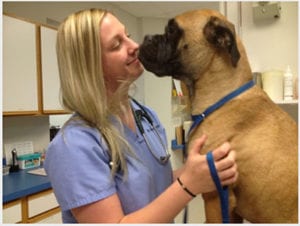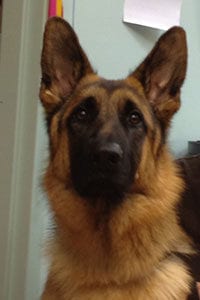 What is Bloat and Gastric Dilatation Volvulus?
What is Bloat and Gastric Dilatation Volvulus?
Bloat is a serious and potentially life threatening condition where the stomach fills excessively with air, fluid, or food. When this happens it can rapidly progress to a life threatening condition called Gastric Dilatation Volvulus (GDV). GDV occurs when a dog bloats and the stomach twist around on itself cutting off the blood supply to both the stomach and spleen. GDV can cause a dog to die with in minutes to hours.
Signs of Bloat and GDV:
The signs include restlessness, anxiety, panting, and acting painful. The stomach area looks boated and enlarged. Dogs act painful when their abdomens are touched and some dogs repeatedly look at or bite at their bellies. Dogs will retch and attempt to vomit repeatedly. The membranes in their mouths can look pale. Dogs go into shock and then collapse. If you notice any of the above signs, call or go to your veterinarian immediately. This is a life threatening emergency.
How is GDV Treated?
This is a true emergency. Your dog will be rushed back and immediately the veterinary team will quickly take an x-Ray and then try to decompress the bloat. They do this by first placing a very large needle through the abdomen directly into the stomach to relieve the pressure. Then a tube is passed down the esophagus into the stomach to allow for more decompression. The dog usually is in deep shock, so two intravenous catheters are placed and large amounts of fluids as well as medication is administered. Blood work, blood pressure, and an electrocardiogram are obtained to aid in treatment. The dog is then rushed into surgery to un-twist the stomach. The stomach is then permanently attached to the body wall by a procedure called a gastropexy to prevent a future GDV. Because of the severity of the condition, dogs can die before, during, and even after surgery.
 Which Dogs are at Risk?
Which Dogs are at Risk?
Large deep chested breeds (German Shepherds, Great Danes, Greyhounds, Mastiffs) and mixes are at greatest risk. However, it can be seen in any dog.
How Can You Prevent Bloat:
Pet owners of breeds known to be at risk should consider having a gastropexy (where the stomach is tacked to body wall to prevent the stomach from twisting) at the time of their pet’s spay or neuter. Feeding more frequent smaller meals throughout the day may also help. Also, prevent gulping or rapidly eating by using feeding toys or placing items too big to swallow or chew in the food bowl. Also, there appears to be a genetic predisposition, so any dog that has bloated or had a GDV should not be bred.
Even with the above preventive measures, bloat and GDV can still occur. If you want to know more about bloat and GDV or find out if your pet is at risk, please feel free to call us or schedule an appointment.


 What is Bloat and Gastric Dilatation Volvulus?
What is Bloat and Gastric Dilatation Volvulus? Which Dogs are at Risk?
Which Dogs are at Risk?